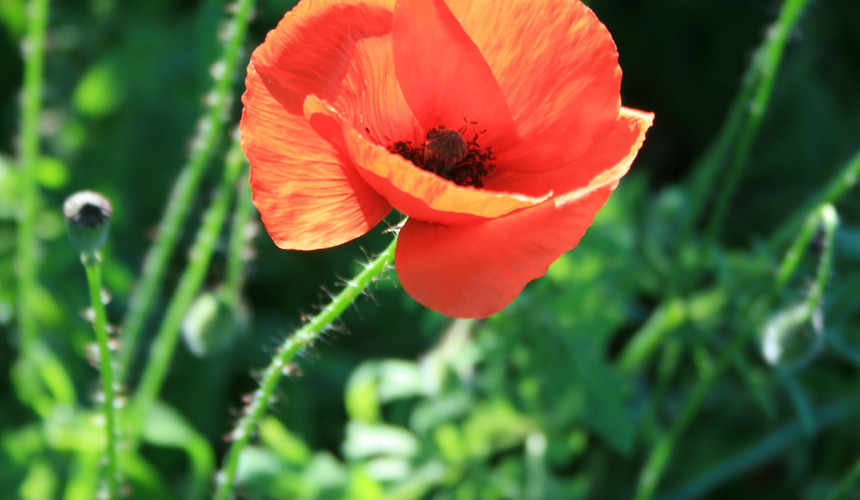Cordoba - and the Alcazar de los Reyes Cristianos
- Fiona
- Jul 4, 2021
- 4 min read
Two hours from Granada, is yet another fascinating Andalucian city with a long and rich history - Cordoba!
Like so many places we have been to in Andalucia, Cordoba began as a Roman settlement, then the Visigoths moved in, followed by the Muslim conquests in the eighth century when it became a world leading centre of education and learning.
Then in1236, Islamic rule ended with the arrival of the Christians in the form of Ferdinand III, the Catholic king of Castile and Leon. As well as a couple of UNESCO heritage sites (there are four of them here), Cordoba is famous in Spain for its sizzling summer temperatures - in fact Andalucia is the hottest area in Spain and the whole of Europe; Cordoba and Seville, average above 36 degrees in the summer.

We checked into our beautiful Airbnb (photos coming in the next post) and then headed into the old town next to the Guadalquivir River.
A Roman Bridge
Spanning the Guadalquivir River, we were impressed with this ancient Roman Bridge that was originally built in the early 1st century BC across the Guadalquivir River. Although, it has been reconstructed at various times since, most of the present structure dates from the Moorish reconstruction in the 8th century - so still quite old! (see earlier post about the Guadalquivir in Seville here)
The Alcazar de los Reyes Cristianos
Alcázar of the Christian Kings - and a UNESCO World Heritage site.
(An palace or fortress built by Moorish Kings)
Before the Alcazar of Cordoba was built, a Visigoth fortress stood in its place. The Moors expanded the structure to make it into their Alcazar and by 1235 they had also created beautiful gardens, luxurious baths and interestingly the largest library in the West. The baths and gardens were made possible by watermills diverting water from the nearby Guadalquivir River.
In 1236, Christian forces took Córdoba during the Reconquista. In 1328, King Alfonso XI of Castile began building the present day fortress Whilst its inhabitants were Christian, they maintained the Mudejar architectural style of the Moors.
Some of the Alcazar's most notable inhabitants include Isabella the 1st and Ferdinand of Aragon. They ruled fiercely, establishing the Spanish Inquisition and using the fort as the headquarters for their campaign against the still Muslim Granada. The baths were changed into torture and interrogation chambers. The Alcázar is also the place where Ferdinand and Isabella met Christopher Columbus as he prepared to take his first voyage to the Americas.
During the 19th century, the Alcazar served as a garrison for Napoleans troops. After that it became a prison. Finally, in the 1950s the Alcazar was proclaimed a national monument and has become a major tourist attraction.
It was quite warm in Cordoba when we arrived, so we booked our visit for the last time slot of the day - We walked quickly through the fortress building, (stopping only to admire some lovely mosaics on the floor and walls) toward the complex’s major drawcard - the courtyards and gardens.
We went through several courtyards first, they had low basin fountains, low hedges and a wide variety of tress to provide shade, such as palm, cypress, orange and lemon trees.
The gardens are laid out in Mudejar style with three levels - the upper garden, the middle garden and the lower garden. The ponds and fountains in these gardens were exquisite. When we first reached them, the fountains were going and the vistas of the gardens were splendid. During our visit the fountains were shut off (remember we were the last visitors of the day) which meant that we could see the most beautiful reflections in the ponds. (although I think turning off the fountains early was to aid the prompt departure of the staff at closing time rather than enabling the admiration of reflections in the ponds…)
The lower level garden incorporates The King’s Walk (el paseo de los reyes) that is a walk bordered by a line of cylindrical cypress trees and is also divided into two paths by two narrow ponds. On this walk, there are several sculptures of the Kings who built the Alcázar, which are located on pedestals aligned between the hedges. There is also a statue of Columbus meeting Isabella and Ferdinand.
The current gardens date from a major remodelling around the mid-20th century,
Access the thumbnail pics by clicking on the arrow on the right of the main picture - apologies that the arrow is difficult to see - I'm still trying to work out how to change the colour to make it more visible...
Local cuisine in Cordoba
The first evening we dined at the Taberna el Potro which was a local restaurant in a little plaza close to the river. Our Airbnb host, Isabela, had suggested we try some local dishes and so we did...
The first thing we tried was Flamenquin de Jamon de Serrano - a breaded pork roll stuffed with Serrano ham. Meat inside meat - Alan was happy! We also had eggplant fritters with local honey - the food was okay, it was interesting to try something local. I was glad to have a cold cerveza to wash it down with:)
The following day after several hours of walking, we stopped at a a small bar - La Contentura and we were promised by the waiter/owner that they served the best salmorejo in Cordoba - his mother’s recipe - I was intrigued and so ordered it - I'm not usually a fan of cold soup, but on that hot Cordoba afternoon, it was absolutely delicious. We also ordered some croquetas de rabo de toro (bull's tail croquettes)
Note
Salmorejo is a cold tomato soup that is famous in the south of Spain. It’s similar to gazpacho — but thicker and creamier. It is simply fresh tomatoes and perhaps a clove of garlic, blended with stale bread, extra virgin olive oil, and sherry vinegar.
The way the olive oil and tomatoes emulsify gives the soup a creaminess that makes many people think that there is actually cream in the soup - but our waiter promised us that there wasn’t.
Most people top the cold soup with hard-boiled egg and cured Spanish ham, which is how mine was served.
Coming up - the next post is about two more UNESCO World Heritage sites (The Mosque of Córdoba, and the Patios festival) and our beautiful Airbnb!


















































Comments